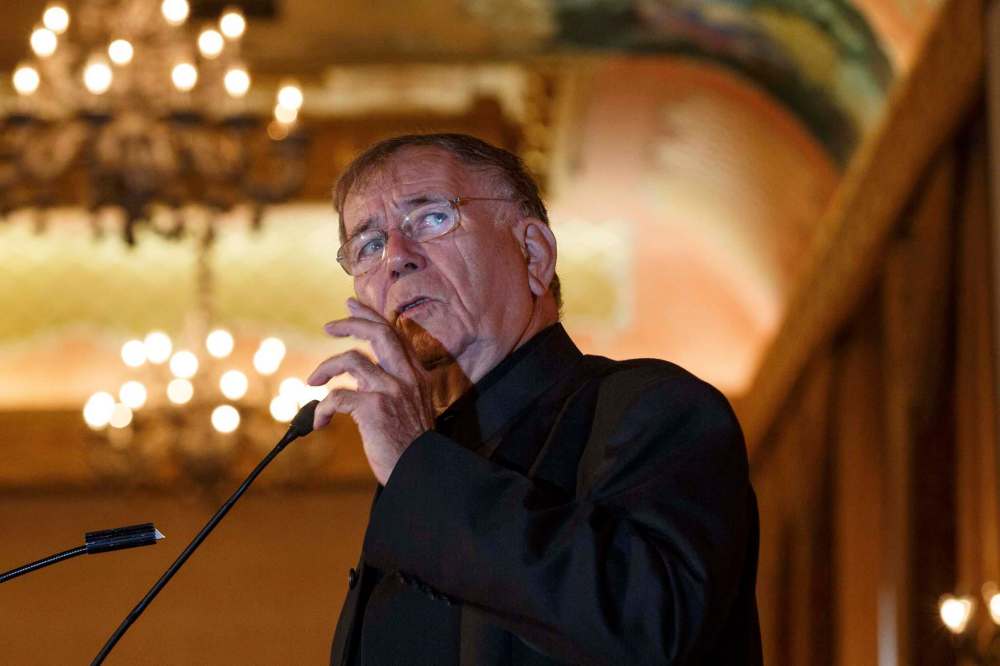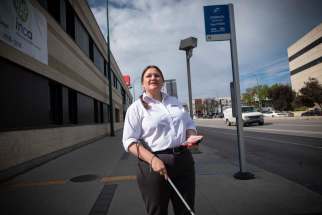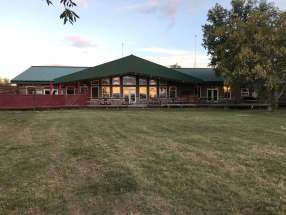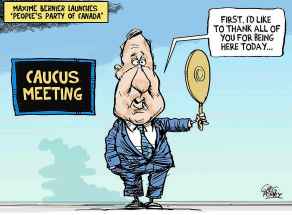Put people first: architect tells city planning conference
Read this article for free:
or
Already have an account? Log in here »
To continue reading, please subscribe:
Monthly Digital Subscription
$0 for the first 4 weeks*
- Enjoy unlimited reading on winnipegfreepress.com
- Read the E-Edition, our digital replica newspaper
- Access News Break, our award-winning app
- Play interactive puzzles
*No charge for 4 weeks then price increases to the regular rate of $19.00 plus GST every four weeks. Offer available to new and qualified returning subscribers only. Cancel any time.
Monthly Digital Subscription
$4.75/week*
- Enjoy unlimited reading on winnipegfreepress.com
- Read the E-Edition, our digital replica newspaper
- Access News Break, our award-winning app
- Play interactive puzzles
*Billed as $19 plus GST every four weeks. Cancel any time.
To continue reading, please subscribe:
Add Free Press access to your Brandon Sun subscription for only an additional
$1 for the first 4 weeks*
*Your next subscription payment will increase by $1.00 and you will be charged $16.99 plus GST for four weeks. After four weeks, your payment will increase to $23.99 plus GST every four weeks.
Read unlimited articles for free today:
or
Already have an account? Log in here »
Hey there, time traveller!
This article was published 19/09/2018 (2641 days ago), so information in it may no longer be current.
Making cities livable requires planners and developers to focus on people rather than cars and highrise buildings.
That was the message from Danish architect Jan Gehl, and several others speakers, as the city’s business, development and planning communities gathered at a half-day conference hosted by the Winnipeg Chamber of Commerce Wednesday.
Gehl, 82, established an international reputation as a city planner who “pedestrianized” some of world’s major cities, including Moscow, and Times Square in New York City. He incorporated design and planning that removed vehicles from downtown areas and returned public places to pedestrians and cyclists.
He is the author of several influential books on planning, including Life Between Buildings, Public Spaces, Public Life and his most recent, Cities For People, which has been published in 31 languages.
During a 50-minute talk that was liberally sprinkled with humorous stories from his 60-year-career, Gehl explored the evolution of city planning through the 20th century to today.
After the Second World War, Gehl said, city planning was dominated by a preoccupation with the automobile and concrete buildings. Planners didn’t consider how people interacted with their surroundings.
“The needs of the car became the major thing,” Gehl said. “I hear the cars in Winnipeg are the most happiest cars in the world because you have three, four five parking spaces for each car and that’s fantastic. I would love to be a car here.”

Gehl was critical of architecture schools and professors who emphasized design and aesthetics at the expense of people.
“We knew nothing about what effect this had on people and people’s desire to go outside and use public spaces,” he said, telling the audience that he had a professor in architecture school who said, “a good housing area is something which looks good from a freeway. That was my training.”
He credited the late city planner Jane Jacobs for sparking a revolution in urban planning by reacquainting planners and architects with the concept of designing streets and buildings for people.
The morning session was dominated by advocates in favour of reopening Portage and Main to pedestrians, including architect Brent Bellamy, and former Winnipeg mayor Glen Murray.
Others speakers talked about the suburban and urban development, including Eric Vogan, vice-president at homebuilder Qualico and president of the Urban Development Institute of Manitoba; City of Winnipeg chief planner Braden Smith; Jeanette Montufar, founding partner and CEP of MORR Transportation Consulting; and Hazel Borys, president and CEO of PlaceMakers, a planning firm with offices in Winnipeg and Calgary, and several U.S. cities.
Former mayor Glen Murray endorses Bowman
Brian Bowman has received an unexpected endorsement in his bid for re-election.
Speaking at a Winnipeg Chamber of Commerce event Wednesday, former mayor Glen Murray said he supports Bowman’s efforts to re-open Portage and Main to pedestrians and he’s backing Bowman in the civic election.
“I’m a big fan of (Bowman). I think he’s doing a great job. I think he’s showing real courage and leadership,” Murray told reporters. “I got to know Brian over the years and I’ve been very impressed with him.”
Chamber president Loren Remillard said the event was held during the civic election on purpose.
“This is the time we should be talking about what kind of city we want to build – not for the next four years, but for the next 40 years,” Remillard said. “Today was all about talking about the big-picture issues.
“Winnipeg is no different from any other city,” Remillard said. “Now is the time to ask the question: is Winnipeg for people?”
Borys said streets are important but places and destinations, such as downtown and walkable neighbourhoods, make a community valuable.
“They are our cash cow,” Borys said. “I’m not going to be making the argument that we should do away with suburban development – that’s not going to happen in Winnipeg — but I think we need to get clear on the return to the city and how we can level the playing field so that both forms of development are enabled and fully supported.”
Borys said urban development projects generate greater value for communities than suburban growth. She pointed out suburban housing costs more than twice as much as the equivalent space in urban areas.
“While the suburbs are growing 150 per cent faster than cities in Canada, suburban dwellers pay only half the cost that city dwellers pay for roads,” and other services, Borys said. “We simply can’t keep building low-return places without having some cash cows downtown and notably distributed through our suburban fabric to up the ante.”
aldo.santin@freepress.mb.ca











